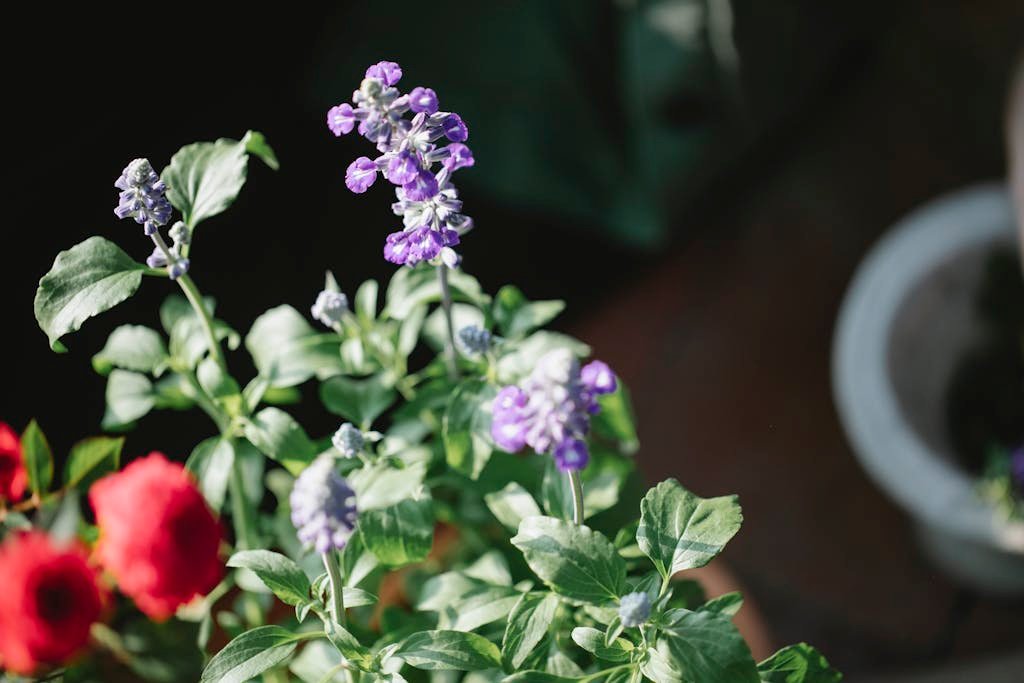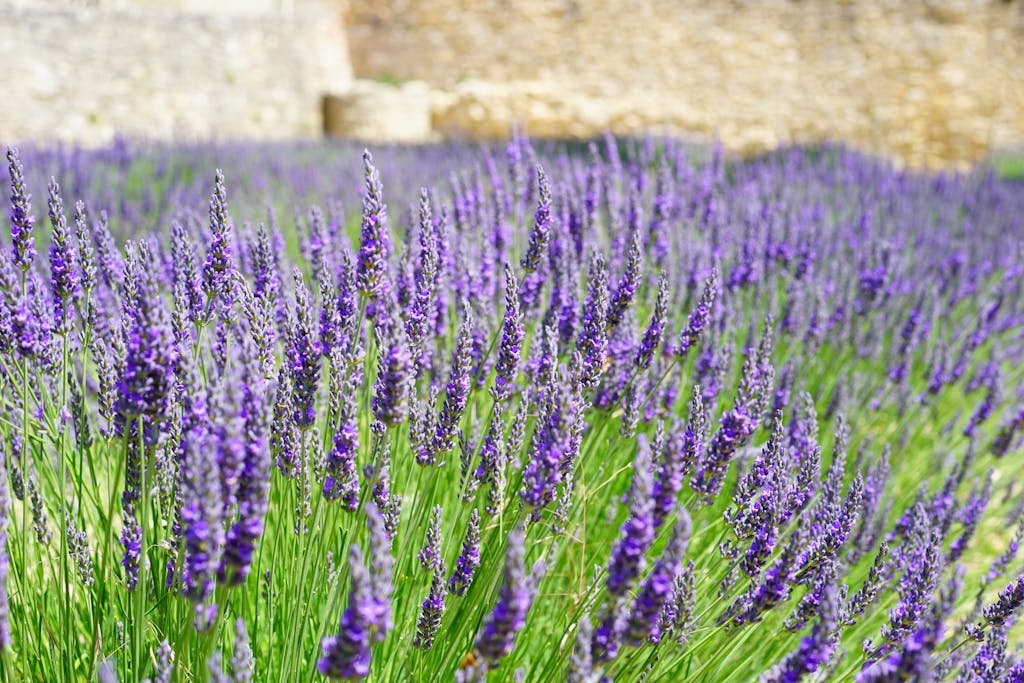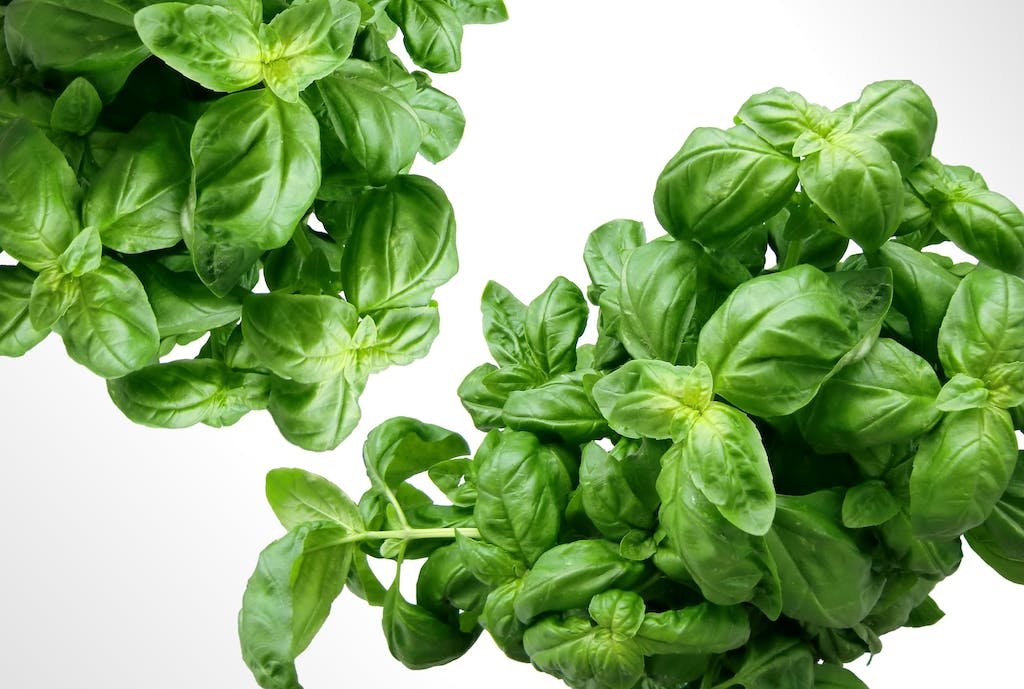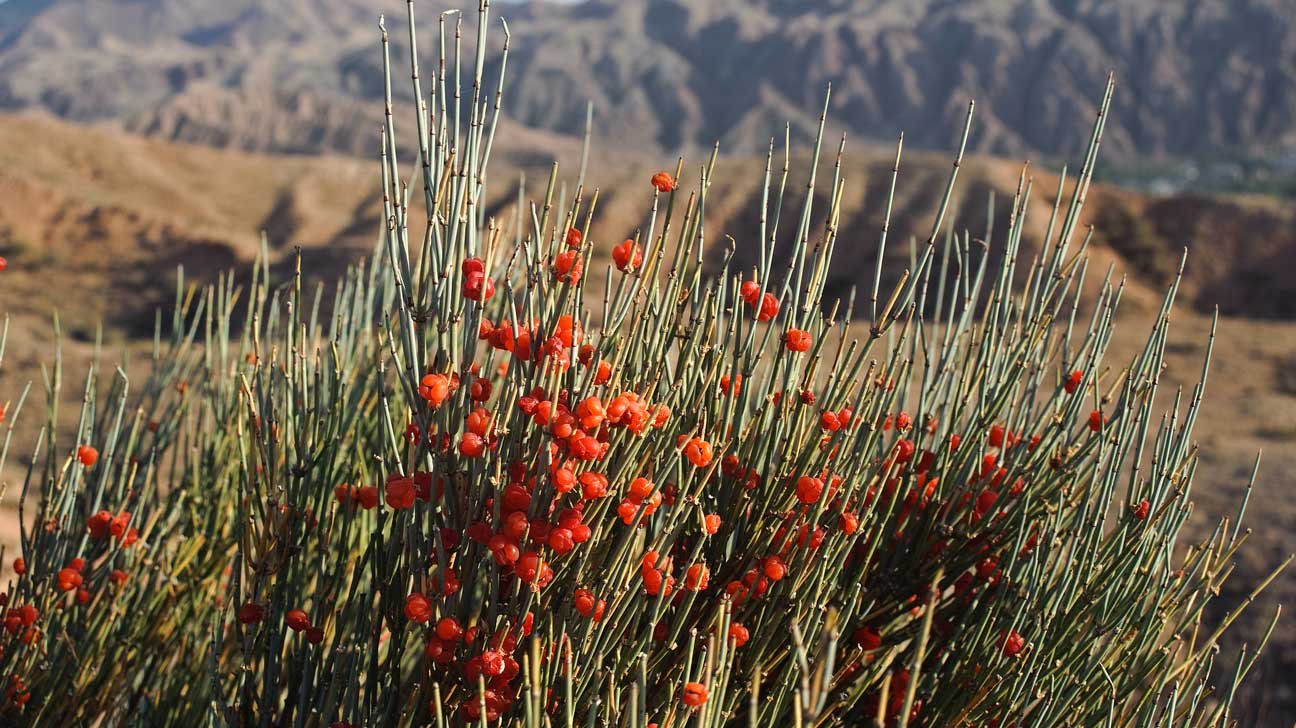Salvia – (Salvia divinorum)
Salvia divinorum, often simply known as Salvia, is a plant with a rich tapestry of history and mystery. Native to the cloud forests of Mexico, it’s not just any ordinary plant; it’s a key to unlocking profound psychedelic experiences. For centuries, it’s been used in sacred rituals by the Mazatec shamans, offering a glimpse into other dimensions and deeper states of consciousness.
Today, Salvia divinorum continues to intrigue and mystify. Its potent psychoactive properties have caught the attention of modern seekers and scientists alike. They’re delving into its effects, legality, and potential therapeutic benefits. As we embark on this exploration of Salvia, we’ll uncover the allure of this enigmatic plant and why it remains a subject of fascination across the globe.
Key Takeaways
- Salvia divinorum, a psychoactive plant native to Mexico’s cloud forests, has a long history of use in Mazatec shamanic rituals for spiritual exploration and healing.
- Unlike other psychedelics, Salvia’s active compound, salvinorin A, uniquely affects the brain’s kappa opioid receptors, offering a distinct and potent psychedelic experience characterized by vivid visual hallucinations and altered perceptions of reality.
- The legality of Salvia divinorum varies globally, with some countries and U.S. states imposing bans or regulations due to concerns over its psychoactive effects and potential for misuse, underscoring the need for informed legislation that considers both its cultural significance and therapeutic potential.
- Ongoing research into Salvia divinorum is exploring its utility in treating conditions such as addiction, depression, and chronic pain, highlighting its potential non-addictive mechanism of action and distinct therapeutic properties.
- The traditional use of Salvia by Mazatec shamans, emphasizing respect, mindful consumption, and spiritual context, contrasts with the recreational use in Western society and provides insights into safer and more meaningful experiences with the plant.
History and Origins of Salvia divinorum
The roots of Salvia divinorum, often simply called Salvia, stretch deep into the heart of the Sierra Mazateca region in Oaxaca, Mexico. This enigmatic plant has been a vital component of the Mazatec shamans’ spiritual practices for centuries, if not millennia. The precise origins of Salvia’s use remain shrouded in mystery, largely because the Mazatec communities kept their rituals secret from the outside world until the mid-20th century.
Salvia divinorum is unique among the Salvia genus for its psychoactive properties, which are attributed to the compound salvinorin A. Unlike other psychoactive plants that contain alkaloids, salvinorin A is a terpenoid, setting Salvia apart in the way it affects the human brain and consciousness.
Historical accounts suggest that the Mazatec shamans utilized Salvia divinorum for divinatory rituals, healing practices, and as a sacrament in sacred ceremonies. The plant was traditionally consumed by chewing fresh leaves or by brewing a tea, methods believed to induce visions and enable the shamans to commune with the divine or spiritual realm.
The Western world remained largely unaware of Salvia divinorum until R. Gordon Wasson, an ethnomycologist, and Albert Hofmann, the chemist known for synthesizing LSD, documented their experiences with the plant in the 1960s. Their research and subsequent publications unveiled Salvia to a global audience, sparking scientific and public interest in its effects and potential uses.
Researchers today continue to explore Salvia divinorum, focusing on its psychoactive effects, mechanism of action, and potential therapeutic benefits. Studies indicate that salvinorin A interacts uniquely with the brain’s kappa opioid receptors, which may offer insights into treating conditions like addiction, depression, and chronic pain. However, the legal status of Salvia varies widely across countries and states, reflecting ongoing debates about its safety, cultural significance, and potential for abuse.
As science advances, the fascination with Salvia divinorum only grows, bridging ancient traditions and modern research in the quest to understand this powerful plant’s full potential.
The Sacred Use of Salvia in Mazatec Rituals
The heart of Salvia divinorum’s mystical allure traces back to its sacred use by the Mazatec shamans in Mexico. For centuries, these indigenous healers have utilized Salvia within their spiritual rituals, viewing the plant not merely as a substance but as a sacred entity. Its use is deeply integrated into their healing practices and divinatory rituals, underlining a profound respect and understanding of its potent psychoactive effects.
Salvia serves a dual purpose in Mazatec culture: it’s both a medium for spiritual exploration and a tool for medicinal healing. Shamans typically consume Salvia in a very ritualistic manner, often through oral ingestion of fresh leaves or by drinking a concoction made from the plant. The traditional method of using Salvia involves a quiet, darkened environment, which is believed to facilitate more profound spiritual experiences.
Research Into Salvia’s Traditional Uses
Recent research has begun to shine a light on the traditional uses of Salvia divinorum, emphasizing its importance in Mazatec rituals. Studies highlight the careful, respectful approach to its consumption, starkly contrasting with the often recreational use seen in Western societies. Researchers argue that the Mazatec shamans’ approach could offer insights into safer, more meaningful ways to experience Salvia’s effects.
The psychoactive compound in Salvia, salvinorin A, has been a particular focus of scientific research. Unlike other psychoactive substances derived from plants, salvinorin A does not contain nitrogen, making Salvia’s effects unique in the world of natural psychedelics. Research has suggested potential therapeutic uses for Salvia, including in the treatment of addiction and depression, owing to its distinct psychoactive properties.
As the Western world continues to explore Salvia divinorum’s potential, both scientifically and recreationally, understanding its traditional use in Mazatec rituals provides an essential context. This knowledge highlights a profound respect for the plant’s power and emphasizes the importance of mindful, respectful use.
Unlocking the Psychedelic Experiences with Salvia divinorum
Salvia divinorum, often referred to simply as Salvia, is a plant with potent psychoactive properties that have fascinated researchers and spiritual seekers alike. Originating from the Mazatec region in Mexico, it’s known for its ability to induce vivid, often intense psychedelic experiences. Unlike other psychoactive substances, the primary active compound in Salvia, salvinorin A, interacts with the kappa opioid receptor in the brain, offering a unique experience distinct from that of substances like LSD or psilocybin.
The peculiar nature of Salvia’s effects has led to considerable interest within the scientific community. Studies have explored its potential for insights into the workings of consciousness and the treatment of certain psychiatric conditions. For instance, research published in the Journal of Ethnopharmacology delves into the traditional uses of Salvia, highlighting its significance not only in cultural rituals but also in its potential therapeutic applications.
Salvia’s psychedelic experiences are often characterized by:
- Visual hallucinations
- Altered perception of reality
- Feelings of traveling through time or space
- Encounters with entities or dimensions
Given its powerful effects, Salvia consumption is typically approached with caution. Traditional Mazatec rituals emphasize the importance of setting and guidance, principles that modern explorers of Salvia’s potential would do well to heed. The respect for and understanding of Salvia’s power can aid in ensuring that its use in both spiritual exploration and potential therapeutic contexts is conducted safely and productively.
Researchers continue to investigate Salvia divinorum, with a focus on both its traditional uses and modern applications. Studies are examining how the plant might be leveraged in treatments for addiction, depression, and other mental health conditions, signaling a growing recognition of its potential beyond mere recreational use. As the body of research expands, so too does the understanding of how Salvia can be responsibly integrated into various therapeutic and spiritual practices.
Exploring the Effects of Salvia divinorum
Salvia divinorum, a plant with deep roots in spiritual practice, holds a unique place in the realm of psychoactive substances. When people consume Salvia, usually through smoking or chewing the leaves, they experience effects that significantly differ from other psychedelics. Unlike substances such as LSD or psilocybin, Salvia’s active compound, salvinorin A, interacts with the brain’s kappa opioid receptors. This interaction is notable because it’s a pathway distinct from the serotonin system, which most classic psychedelics affect.
The immediate effects of Salvia are profound and fast-acting, often described as catapulting the user into an entirely different reality or dimension. These experiences, while short-lived—typically lasting from a few minutes to half an hour—are intense and can vary widely from individual to individual. Users report a range of experiences from revisiting childhood memories to elaborate visions of complex, otherworldly environments. Due to the intensity of these experiences, it’s crucial that Salvia is used in a safe, controlled environment, especially for those new to its effects.
Research into Salvia divinorum has been gaining traction in scientific circles. Studies aim to not only understand the pharmacological nuances of salvinorin A but also to explore potential therapeutic applications. Early findings suggest promise in areas such as addiction treatment and mental health, particularly concerning conditions like depression and PTSD. However, such research is in its infancy, and scientists are proceeding with cautious optimism.
Given Salvia’s potent effects and unique mechanism of action, the importance of respecting its traditional uses cannot be overstated. While the allure of its psychoactive properties might be compelling for some, it’s essential to approach Salvia divinorum with the same reverence and mindfulness as the Mazatec shamans have for centuries. Their practices, honed over generations, emphasize the spiritual and medicinal values of Salvia, offering a guide for respectful and safe consumption in modern explorations.
Legality and Controversy Surrounding Salvia
The debate around the legal status of Salvia divinorum mirrors the broader conversation on psychoactive substances, with laws varying widely by country and, in the United States, by state. As of now, Salvia remains legal in some jurisdictions while others have moved to control or ban its use altogether. This patchwork legal landscape often reflects differing perspectives on the plant’s safety, cultural significance, and potential for abuse.
In the United States, the legal situation is particularly complex. Salvia divinorum is not regulated under the Federal Controlled Substances Act, but several states have their own restrictions, ranging from complete bans to regulations on sales and distribution. These state-level laws often categorize Salvia in a manner similar to other controlled substances, despite its unique properties and uses.
- Legal Status in the US (as of the latest update):
- Banned: In states like Delaware, Florida, and Illinois, among others.
- Regulated: Some states regulate its sale, often prohibiting sales to minors.
Internationally, countries have taken various approaches. For instance, Australia, Denmark, and Italy have strict controls or outright bans on Salvia, while others have yet to legislate or regulate its use.
Controversy surrounding Salvia largely stems from its psychoactive effects, with some arguing that it poses a risk to public health, particularly to younger users. Detractors point to the intense, albeit short-lived, hallucinogenic experiences it can produce, calling for stricter control. On the other hand, proponents highlight its traditional use for spiritual and healing purposes by the Mazatec shamans of Mexico, advocating for a more nuanced approach that respects its cultural heritage and potential therapeutic benefits.
Research into Salvia divinorum‘s effects and potential applications is ongoing, with some studies suggesting it may offer pathways for treating conditions like addiction and depression. This scientific interest underscores the importance of balancing regulation with access to Salvia for research and traditional uses. As the conversation continues, it’s clear the future of Salvia’s legality and its place in society will hinge on further research, public dialogue, and careful consideration of its unique cultural and pharmacological profile.
Potential Therapeutic Benefits of Salvia divinorum
The intriguing psychoactive properties of Salvia divinorum have spurred a myriad of scientific investigations into its potential therapeutic benefits. Researchers are particularly interested in salvinorin A, the primary active compound in Salvia, which exhibits unique binding affinity for kappa opioid receptors in the brain. This interaction is believed to influence perceptions, consciousness, and potentially hold the key to unlocking novel treatments for several mental health disorders.
Studies suggest that Salvia divinorum may offer promising therapeutic avenues for conditions such as addiction, depression, and chronic pain. Unlike other psychoactive substances that target the brain’s dopamine pathways, Salvia’s mechanism of action does not appear to be addictive, making it an intriguing candidate for substance abuse treatment. For instance, a study published in the Journal of Ethnopharmacology explored Salvia’s potential to curb cocaine addiction, highlighting its ability to diminish addictive behaviors without reinforcing drug-seeking actions.
Depression is another area where Salvia divinorum shows considerable potential. Its atypical psychedelic properties may help reset the brain’s default mode network, offering a fresh perspective that could help break depressive cycles. Early phase research indicates that Salvia’s effects on mood and perception could pave the way for innovative depression therapies, especially for patients resistant to traditional antidepressants.
Chronic pain management is yet another possible benefit of Salvia divinorum. Its kappa opioid receptor agonism may modulate pain perception differently than typical painkillers, offering a new approach for patients for whom conventional treatments have failed. While research in this area is still in its infancy, the analgesic properties observed in preliminary studies are promising.
Despite these potential benefits, it’s crucial to navigate the research landscape with caution. The psychoactive effects of Salvia divinorum are powerful and short-lived, raising questions about the best methods of administration and dosage for therapeutic purposes. Ongoing clinical trials and studies aim to uncover more about Salvia’s safety profile and efficacy in treating these complex conditions.
Salvia divinorum’s journey from sacred shamanic herb to a subject of scientific intrigue highlights its unique place in both cultural history and modern medicine. With its potent psychoactive properties, Salvia offers a window into the mind’s depths, promising new pathways for treating mental health disorders.
The exploration of salvinorin A’s effects on the brain’s kappa opioid receptors opens up exciting possibilities for addiction treatment, depression relief, and chronic pain management. As research continues to unfold, Salvia divinorum stands on the frontier of psychiatric and therapeutic innovation, beckoning a closer look at how ancient wisdom can inform contemporary healing practices. Yet, the path forward is tread with caution, ensuring that the potent effects of Salvia are harnessed responsibly to unlock its full therapeutic potential.




